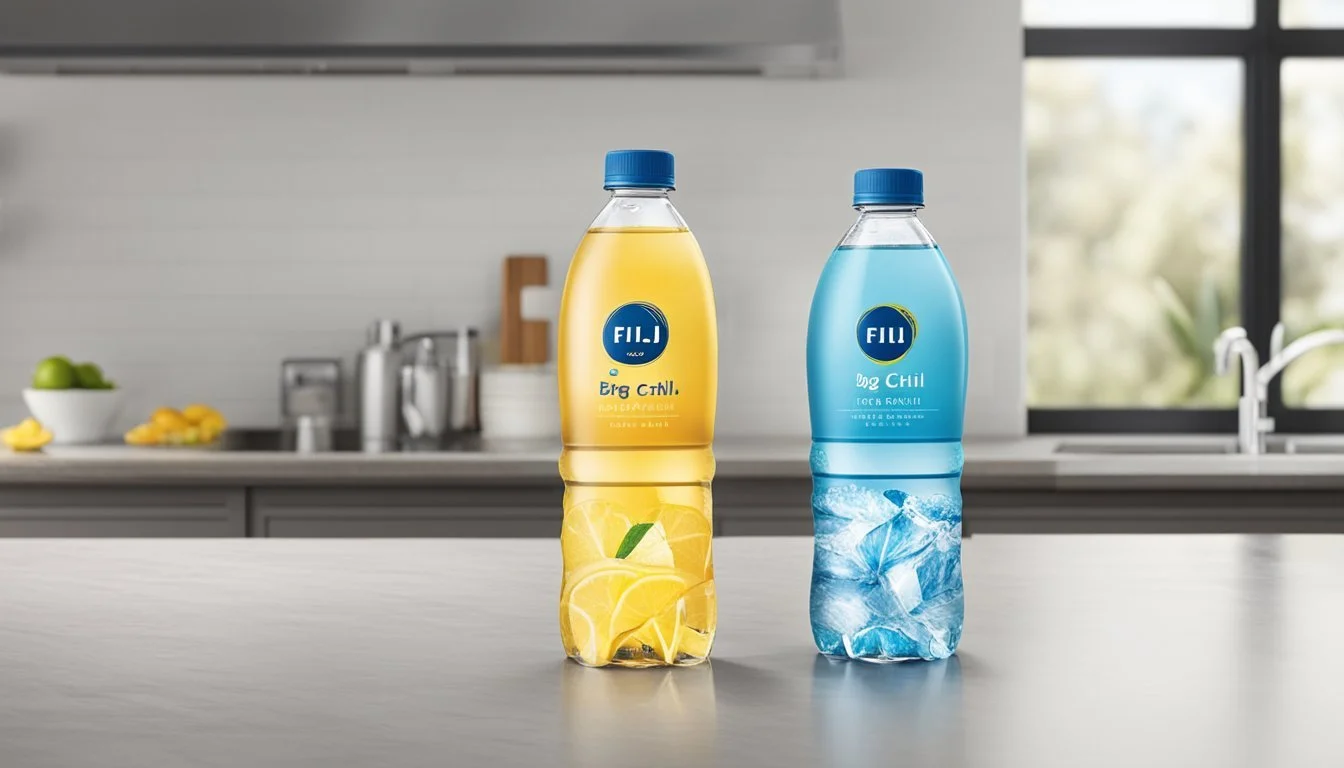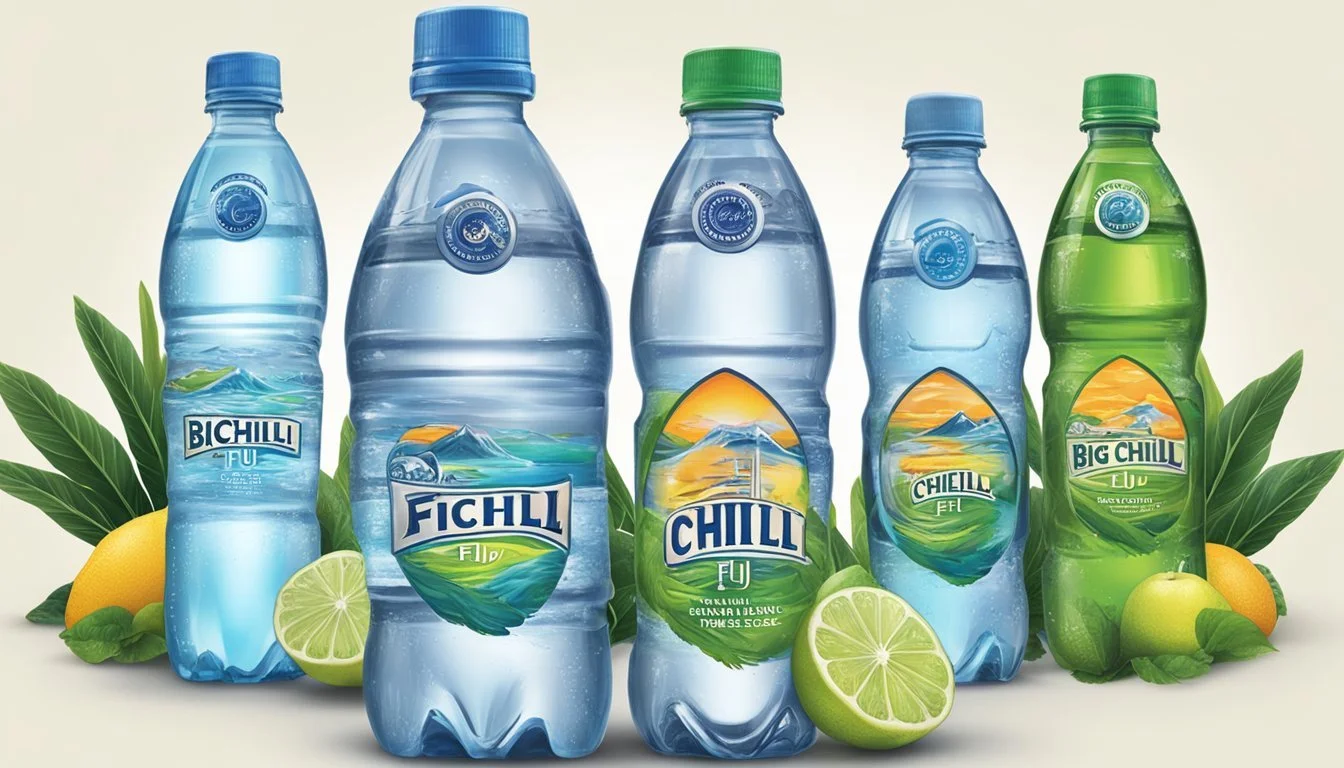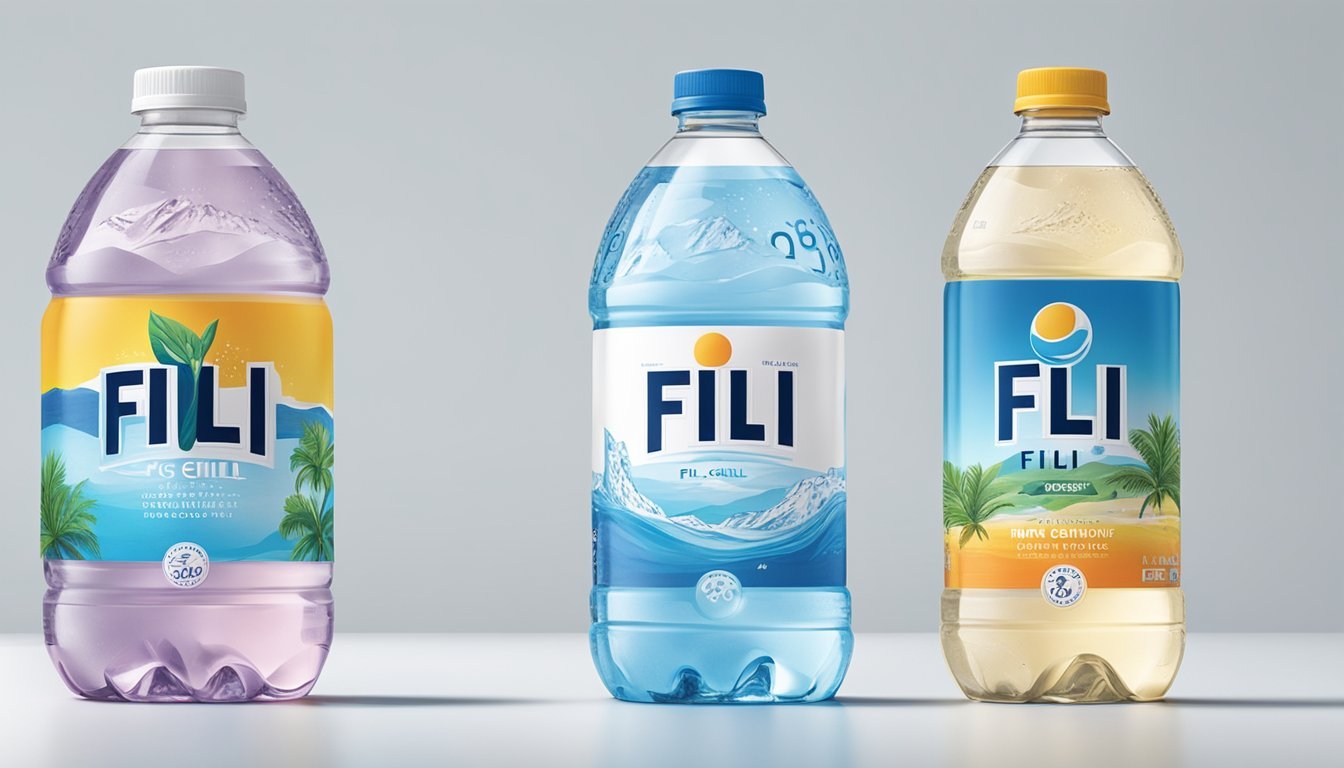Fiji vs. Big Chill
Which Bottled Water is Better for You?
When it comes to choosing bottled water, consumers often debate between various brands, each boasting unique benefits. Fiji and Big Chill are two contenders frequently reviewed for their taste, purity, and overall quality. Fiji water, sourced from an artesian aquifer in Viti Levu, Fiji, provides a distinct taste profile and purity that sets it apart from many other brands.
Both water brands have their notable qualities. While Fiji emphasizes its naturally occurring electrolytes and mineral content, Big Chill focuses on affordability and being widely accessible to a large audience. Comparing these elements helps clarify which bottled water may align better with individual preferences and requirements.
Incorporating aspects like environmental impact, Fiji's single-use plastic bottles may pose concerns for environmentally conscious consumers. Big Chill, although less known for its environmental stance, offers a competitively priced option. The choice between these two bottled waters ultimately boils down to personal priorities, be it purity, taste, or sustainability.
Understanding Bottled Water
Bottled water comes in various types, each with specific characteristics and origins. This section explores these variations, sources, and the standards governing bottled water quality.
Defining Bottled Water Types
Bottled Waters can be categorized into several types based on their source and treatment process.
Natural Spring Water is sourced directly from a spring, typically found underground where water flows naturally to the surface.
Mineral Water must contain certain levels of dissolved minerals and is typically sourced from mineral springs, maintaining its mineral content through the bottling process.
Artesian Water comes from a confined aquifer that has been tapped and where the water level stands above the top of the aquifer.
Purified Water undergoes processes like distillation, deionization, or reverse osmosis, removing impurities and making it free of contaminants.
These types offer choices based on purity, mineral content, and the method of collection and treatment.
Sourcing and Origin of Water
The source of bottled water impacts its taste, mineral content, and even its cost.
Spring Water and Artesian Water are valued for their natural origins, often sourced from protected, underground formations. Mineral Water specifically comes from areas rich in geological formations that impart essential minerals like calcium and magnesium, collected directly from mineral springs.
Purified Water can originate from any water source but undergoes purification to achieve consistent quality.
Manufacturers often detail the source to highlight the purity and natural benefits, attracting consumers looking for water with unique characteristics.
Bottled Water Quality Standards
Quality standards for bottled water ensure safety and consistency. Regulatory bodies such as the FDA in the United States establish guidelines for contaminants, labeling, and processing methods.
Natural Artesian Water and Mineral Water must meet specific criteria regarding mineral content and sourcing.
Purified Water faces stringent purity requirements, often surpassing tap water standards.
Manufacturers must comply with these standards, regularly testing their products for quality and safety. Proper labeling informs consumers about the source, mineral content, and any treatments, ensuring transparency and compliance with regulatory mandates.
Analysis of Fiji Water
Fiji Water is renowned for its origin, unique mineral content, and premium branding. The analysis will delve into its source, the specifics of its minerals, and its packaging strategy.
Fiji Water Origin and Extraction
Fiji Water is sourced from an artesian aquifer located on the island of Viti Levu in the Fiji Islands. This aquifer is deep underground, which helps protect the water from contaminants present at the surface. The extraction process is designed to ensure that the water remains pure and untouched by human hands throughout its journey from the aquifer to the bottled product.
The remoteness of the Fiji Islands contributes to the water's unique appeal, suggesting an untouched and pristine origin. Many consumers believe that this isolation from industrial pollutants enhances the water's purity.
Mineral Content of Fiji Water
Fiji Water boasts a distinctive mineral profile, rich in silica, calcium, magnesium, and other electrolytes. The table below highlights the primary minerals found in Fiji Water and their approximate concentrations:
Mineral Approximate Concentration (mg/L) Silica 93 Calcium 18 Magnesium 15 Bicarbonates 152
Silica is particularly notable, as it is believed to contribute to healthy skin and hair, adding to Fuji Water's allure. The presence of calcium and magnesium makes it beneficial for bone health and metabolic functions.
Fiji Water Packaging and Brand
Fiji Water's packaging is instantly recognizable, featuring a square bottle with a bright blue cap and vibrant tropical images. This design not only stands out on shelves but also reinforces the brand's exotic and premium image.
Despite its appealing design, there are environmental concerns regarding its use of single-use plastic. Critics highlight the issues of plastic waste and potential endocrine-disrupting chemicals released by plastic bottles.
The brand invests heavily in marketing, using celebrity endorsements and high-profile event sponsorships to maintain its status as a luxury product. This strategy has cemented Fiji Water's position as a go-to choice for those seeking an upscale bottled water option.
Analysis of Big Chill Water
Big Chill water presents itself as a viable option for those who prioritize neutral pH levels and moderate mineral content in their bottled water. Key factors to consider include its source, composition, and environmental packaging.
Big Chill Water Source
Big Chill water is distributed by CVS Pharmacy Inc. It is classified as purified water, which typically means it has undergone processes like reverse osmosis or distillation to remove impurities.
Purified water like Big Chill provides a clean, clear taste. There aren't specific sources like natural springs attributed to it, which contrasts with premium brands that emphasize unique water sources.
Big Chill's Composition and Features
Big Chill water is pH neutral, which is ideal for those looking to balance the body's acidity. A neutral pH level of around 7 is ideal for maintaining health.
While it does not highlight a high concentration of naturally occurring minerals or electrolytes, the purification process ensures that it is free from contaminants. This simplicity might be appealing to consumers who prefer their water to be as pure as possible.
Packaging and Environmental Approach of Big Chill
Big Chill water is typically packaged in single-use plastic bottles. While convenient, this type of packaging is a concern for many due to its environmental impact.
Single-use plastics contribute significantly to waste and environmental pollution. Brands focused on sustainability are gradually moving towards more eco-friendly options like glass bottles or recycled materials, a shift Big Chill may need to consider to stay competitive in an increasingly eco-conscious market.
Adopting sustainable packaging practices could help reduce the environmental footprint and attract environmentally conscious consumers.
Taste Profile Comparison
The taste profiles of Fiji and Big Chill demonstrate noticeable differences rooted in their distinct mineral compositions and sourcing methods. This section examines the sensory attributes and consumer preferences surrounding each brand.
Sensory Analysis of Fiji and Big Chill
Fiji Water is known for its clean, crisp taste, attributed to its natural artesian aquifer source in Fiji. It boasts a smooth texture with subtle mineral notes that appeal to many consumers.
Big Chill, sourced from local springs, offers a refreshing and neutral taste. It has a lighter mouthfeel compared to Fiji, making it suitable for those who prefer a less mineralized flavor.
The Role of Minerals in Water Taste
The mineral content in water significantly influences its taste. Fiji Water contains silica, calcium, and magnesium, which contribute to its distinct smoothness and mild sweetness.
In contrast, Big Chill has lower mineral content, primarily comprised of essential electrolytes which provide its clean and refreshing taste without overpowering flavors.
Consumer Taste Test Results
In blind taste tests, Fiji is often praised for its full-bodied texture and slightly sweet undertone. It tends to rank higher in such tests due to its unique taste profile.
Big Chill generally appeals to those who prefer a more basic and neutral flavor, often described as straightforward and refreshing. This brand holds its own in taste tests, particularly among consumers who favor simplicity and hydration over distinct taste.
Health and Hydration Factors
Fiji and Big Chill offer differing health and hydration benefits based on their mineral content and electrolyte balance. Each water brand caters to health-conscious consumers seeking optimal hydration and mineral intake.
Electrolytes and Hydration
Both Fiji and Big Chill include essential electrolytes that aid in hydration. Fiji Water contains natural electrolytes sourced from its artesian aquifer. These electrolytes, including potassium, magnesium, and calcium, play a vital role in maintaining the body’s fluid balance.
Big Chill also features added electrolytes designed for enhanced hydration. By ensuring adequate electrolyte levels, Big Chill helps prevent dehydration more efficiently, which is particularly beneficial for those engaged in physical activities.
Comparison:
Fiji: Natural electrolytes, sourced from artesian aquifer.
Big Chill: Added electrolytes, tailored for hydration.
Health Benefits of Mineral-Rich Water
Consuming mineral-rich water can positively impact health. Fiji’s mineral content, such as silica, calcium, and magnesium, contributes to better skin health and bone strength.
Big Chill water is often enhanced with minerals, including potassium and sodium, which support heart health and aid in muscle function.
Key Minerals:
Fiji: Silica, Calcium, Magnesium.
Big Chill: Potassium, Sodium.
Both brands present unique health benefits through their mineral compositions, providing essential nutrients that promote overall well-being and support various bodily functions.
Environmental and Sustainability Considerations
Environmental and sustainability considerations for bottled water include the impact of packaging materials and initiatives taken by companies to reduce their environmental footprint.
The Impact of Bottles on the Environment
The environmental impact of bottled water primarily stems from the materials used for packaging. Plastic bottles, often made from PET, contribute significantly to plastic waste. This plastic waste can end up in landfills or waterways, adding to microplastics pollution.
Glass bottles are an alternative but have a higher carbon footprint due to their weight and the energy-intensive manufacturing process.
Aluminum cans are another option, being lightweight and highly recyclable, thus reducing the environmental impact compared to plastic and glass.
Efforts to reduce waste also consider the reuse of recycled materials, which can significantly lessen the overall environmental impact.
Sustainability Initiatives in Bottling
Companies are implementing sustainability initiatives to minimize their carbon footprint and plastic waste. For instance, some brands, like the ones from the search results, use 100% recycled plastic (rPET) for their bottles, thus reducing the demand for new plastic.
Other initiatives include Boxed Water packaging, made primarily from renewable resources like paper, which is more environmentally friendly compared to single-use plastic bottles.
Efforts also involve transitioning to recycled materials across all product lines, thus significantly reducing waste and emphasizing a commitment to sustainability.
Brands that focus on reducing their reliance on new plastic and increasing the use of recycled content play a crucial role in the overall mitigation of environmental impact.
Economic Aspect of Bottled Water
Examining the cost dynamics and market positions of Fiji and Big Chill reveals critical insights into their economic impact. Pricing strategies, market segments, and consumer preferences significantly influence their standings in the water industry.
Cost Analysis of Fiji vs. Big Chill
Fiji Water is often priced higher due to its premium positioning, natural sourcing from an underground aquifer in Fiji, and marketing as one of the finest waters. Typical costs for a 500ml bottle range from $2.00 to $2.50, making it a luxury choice for consumers valuing purity and taste.
Big Chill, on the other hand, caters to a broader audience with a more affordable price point. Often found in local convenience stores, it provides a cost-effective alternative. Prices typically range from $1.00 to $1.50 for a similar 500ml bottle. This allows it to appeal to budget-conscious buyers while still offering reliable quality.
Brand Price (500ml) Fiji Water $2.00 - $2.50 Big Chill $1.00 - $1.50
Market Position and Consumer Choices
Fiji Water maintains a strong presence in the premium bottled water market, emphasizing exclusivity and high-quality. Its branding and distribution focus mainly on upscale retailers and specialty stores, targeting consumers willing to pay a premium for perceived health benefits and superior taste.
Big Chill, accessible in convenience stores and supermarkets, aims at mass-market appeal. The brand leverages widespread availability and competitive pricing to attract a diverse consumer base. This strategy positions it effectively within the broader market, particularly among those looking for an economical yet trustworthy option.
In conclusion, Fiji and Big Chill serve distinct niches within the bottled water economy. Fiji caters to a premium segment, while Big Chill provides a cost-effective solution for the everyday consumer.
Conclusion and Recommendations
Fiji Water and Big Chill both strive to offer high-quality bottled water to consumers. Each brand has its unique strengths that appeal to different preferences and needs.
Fiji Water is sourced from an aquifer in Fiji, promoting it as naturally pure. It's known for its distinct taste and high-quality filtration. The packaging, though in single-use plastic, has been a point of contention concerning environmental impact and potential health implications from endocrine-disrupting chemicals.
Big Chill emphasizes affordability and accessibility. While it may not have the exotic source of Fiji Water, it aims to meet quality standards set for bottled water. The water undergoes rigorous purification processes to ensure safety and taste.
Key Comparisons
Feature Fiji Water Big Chill Source Aquifer in Fiji Multiple Municipal Sources Packaging Single-use Plastic Varies, including Recyclable Options Price (500ml) $2.00 - $2.50 Typically Lower Quality Standards High Meets Industry Standards
Recommendations for choosing between the two largely depend on individual priorities:
For Purity and Taste: Fiji Water often stands out due to its natural aquifer source.
For Environmental Concerns: Consumers may prefer Big Chill, especially if they offer recyclable packaging.
For Affordability: Big Chill generally provides a more budget-friendly option.
More About Fiji
Fiji vs Mountain Valley Spring Water: Which Bottled Water is Better?
Fiji vs Whole Foods Italian Still Mineral water: Which Bottled Water is Better?
More About Big Chill
Big Chill vs Kirkland Signature: Which Bottled Water is Better?
Big Chill vs Talking Rain AQA: Which Bottled Water is Better?
Big Chill vs Whole Foods 365: Which Bottled Water is Better?
Cascade Mountain vs Big Chill: Which Bottled Water is Better?
Hawaii Volcanic vs Big Chill: Which Bottled Water is Better?
Hawaiian Springs vs Big Chill: Which Bottled Water is Better?
Icelandic Glacial vs Big Chill: Which Bottled Water is Better?
Mountain Valley Spring Water vs Big Chill: Which Bottled Water is Better?
Nestle Pure Life vs Big Chill: Which Bottled Water is Better?
Richard's Rainwater vs Big Chill: Which Bottled Water is Better?
Solan de Cabras vs Big Chill: Which Bottled Water is Better?
Whole Foods Italian Still Mineral water vs Big Chill: Which Bottled Water is Better?






